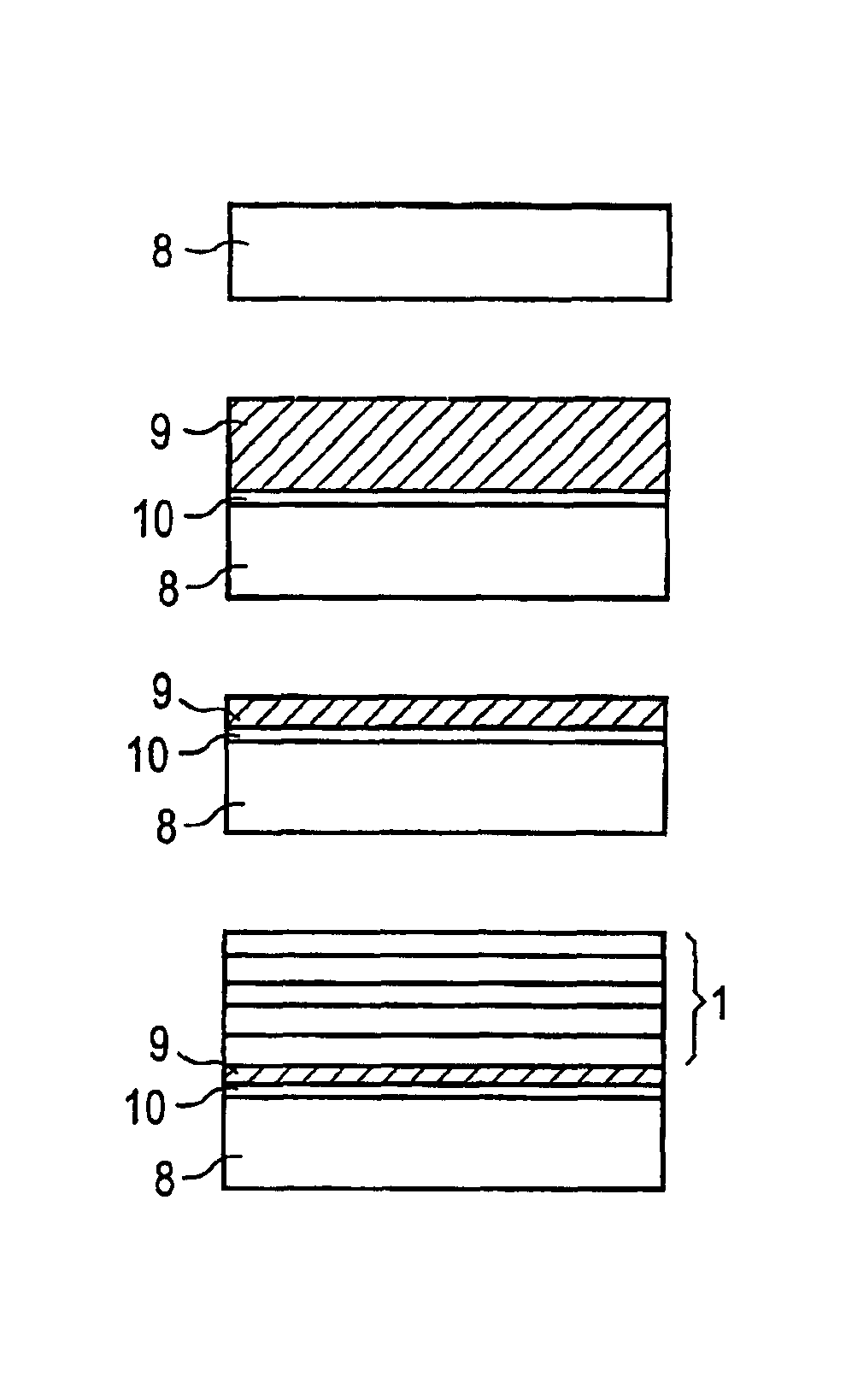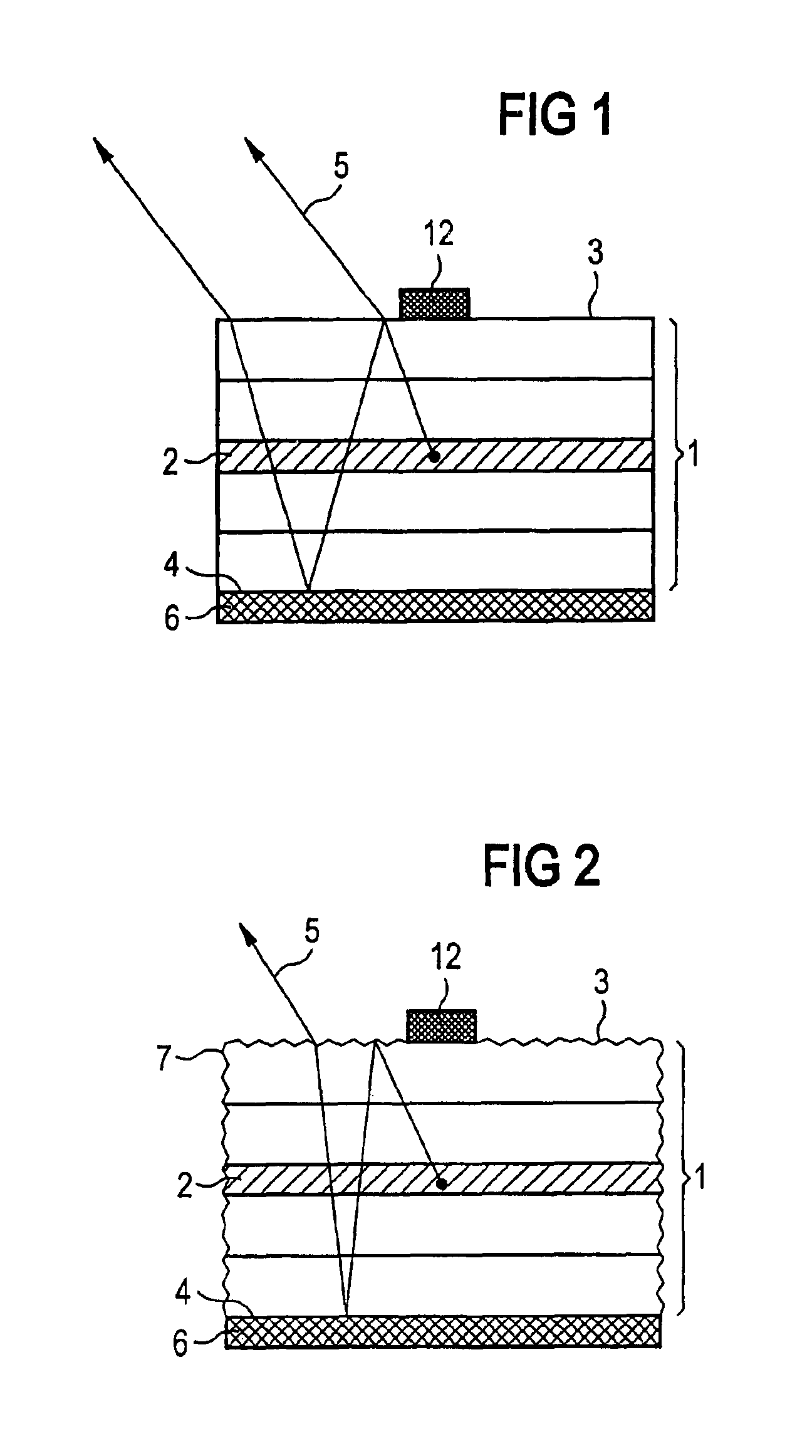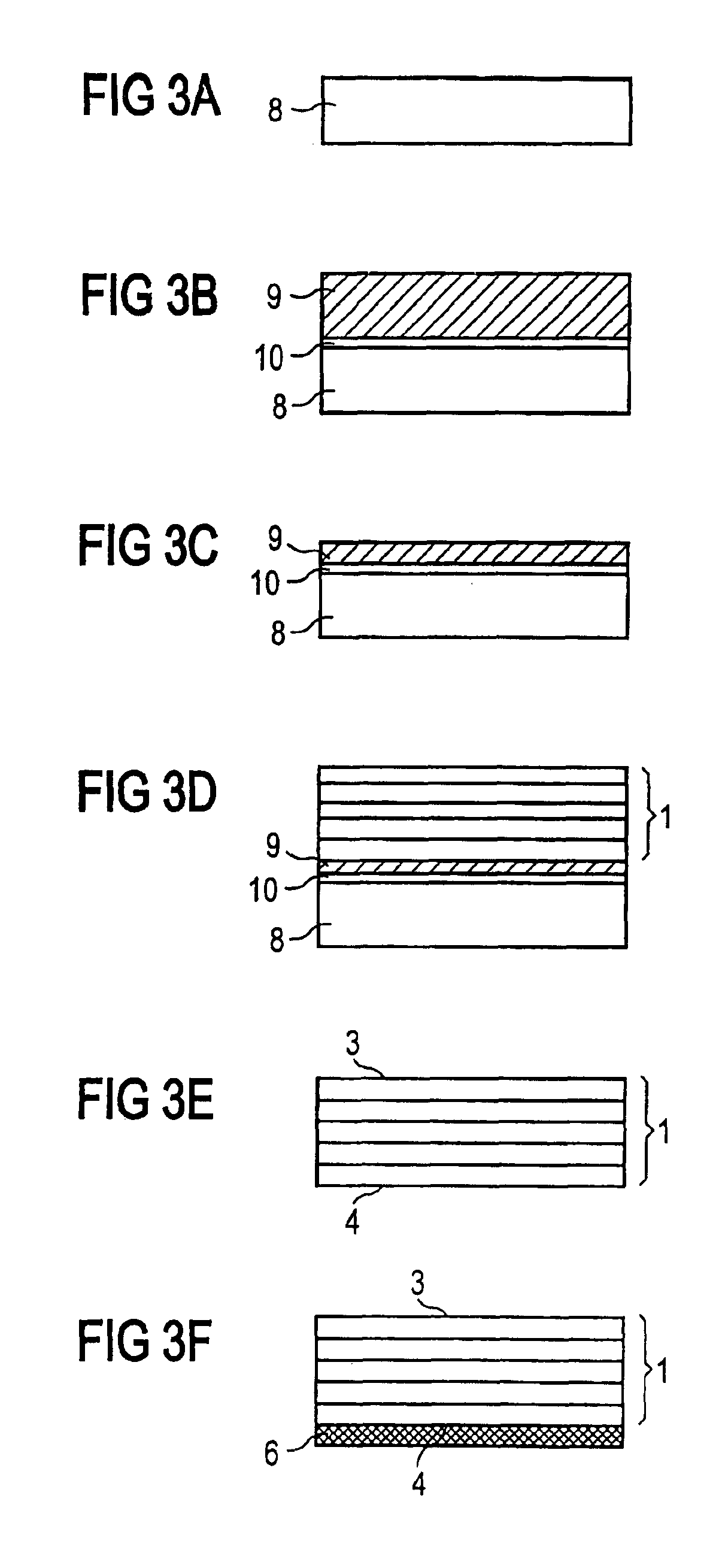Radiation-emitting semiconductor element and method for producing the same
a technology of semiconductor elements and semiconductor components, applied in semiconductor/solid-state device manufacturing, semiconductor devices, electrical equipment, etc., can solve the problems of large refractive index discontinuity, large radiation reflection loss large total reflection of radiation produced at the emission surface, so as to achieve the effect of increasing the radiation yield
- Summary
- Abstract
- Description
- Claims
- Application Information
AI Technical Summary
Benefits of technology
Problems solved by technology
Method used
Image
Examples
Embodiment Construction
The radiation-emitting semiconductor component shown in FIG. 1 has a plurality of different semiconductor layers 1 in stacked arrangement that consist of GaN or of a ternary or quaternary compound based thereon. In operation, an active zone 2 is formed within these layers in which the radiation 5 is generated.
The stack of layers is bounded by a first principal surface 3 and a second principal surface 4. The radiation 5 produced is essentially emitted through the first principal surface 3 to the adjoining surroundings.
A reflector 6 is applied to the second principal surface 4, formed from an Ag layer vapor-deposited on the semiconductor body. Contact with the semiconductor body is made on the emission side by the contact surface 12, and on the reflector side by the Ag reflector layer. Contacting can be achieved on the reflector side, for example, by contacting the semiconductor body on the reflector side with a metal body that serves both as carrier and to infeed current.
The reflecto...
PUM
 Login to View More
Login to View More Abstract
Description
Claims
Application Information
 Login to View More
Login to View More - R&D
- Intellectual Property
- Life Sciences
- Materials
- Tech Scout
- Unparalleled Data Quality
- Higher Quality Content
- 60% Fewer Hallucinations
Browse by: Latest US Patents, China's latest patents, Technical Efficacy Thesaurus, Application Domain, Technology Topic, Popular Technical Reports.
© 2025 PatSnap. All rights reserved.Legal|Privacy policy|Modern Slavery Act Transparency Statement|Sitemap|About US| Contact US: help@patsnap.com



